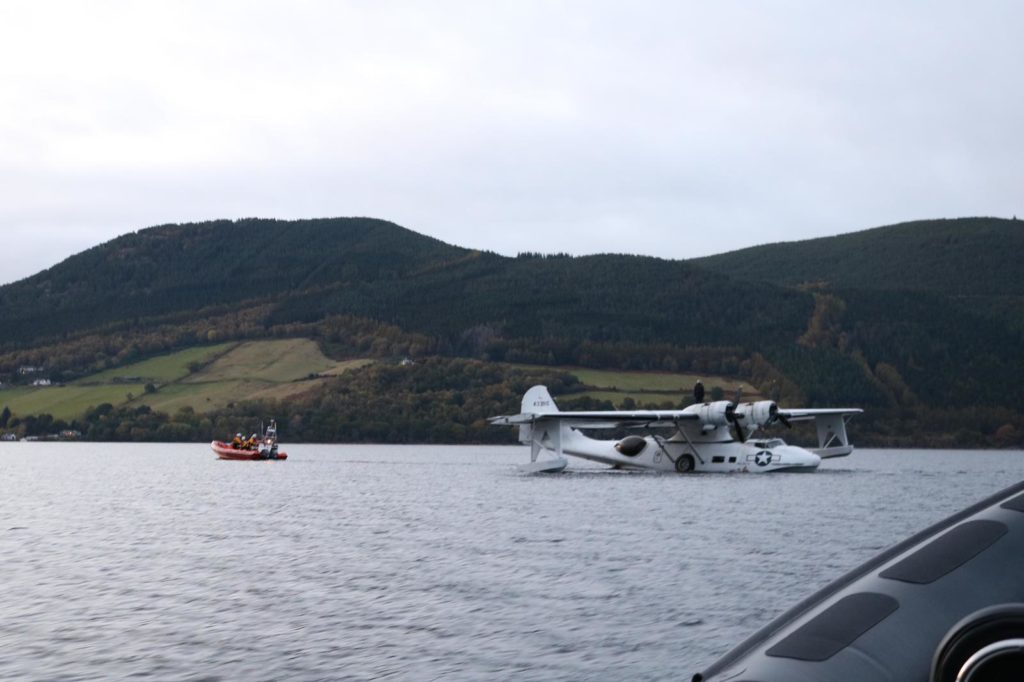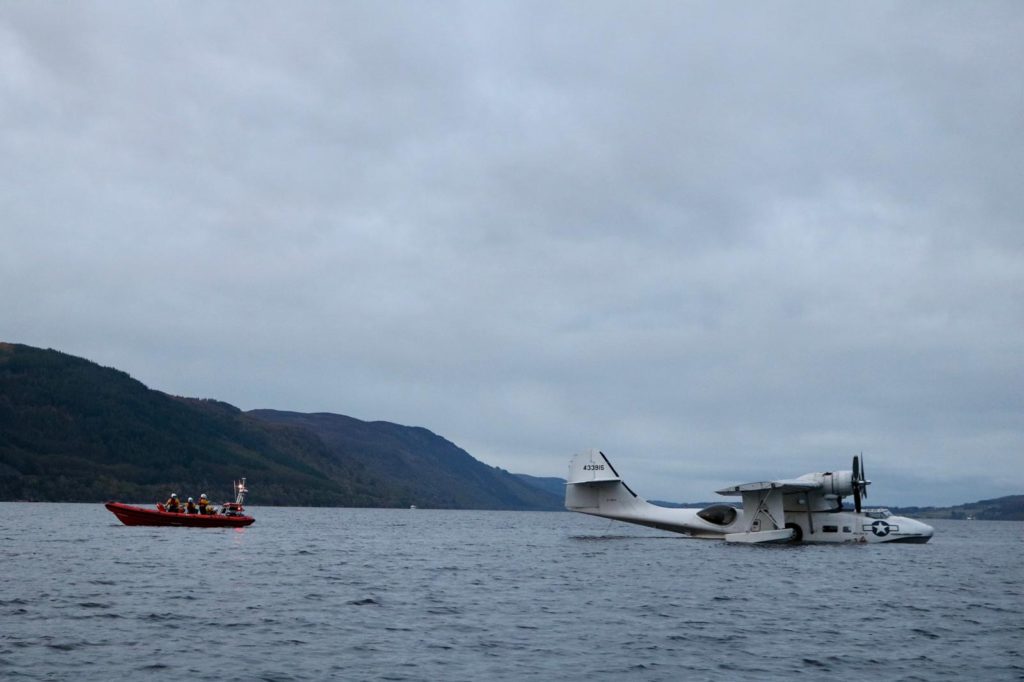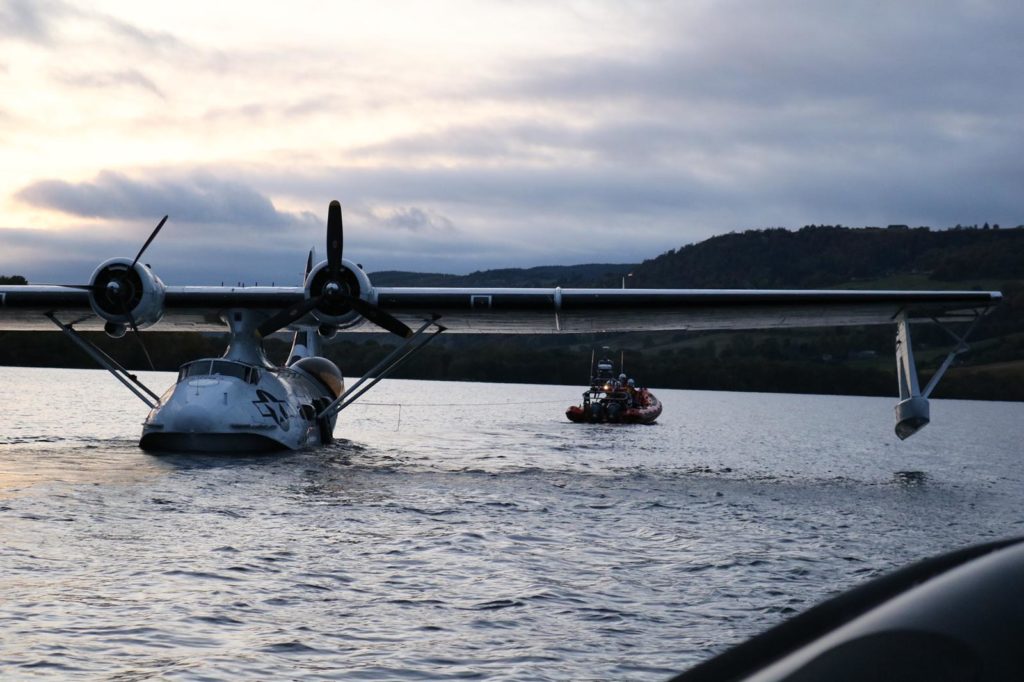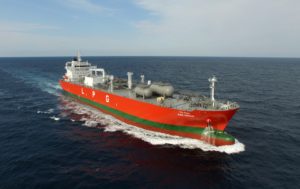Aircraft drifts helplessly on Loch Ness

There was an unusual sighting reported on Loch Ness yesterday, but this time it was seaplane Catalina, a WWII flying boat with a wingspan of 32m.
The seaplane called for help after the crew experienced engine issues while attempting to take off from the loch. According to the Daily Record, the plane was filming.
With the plane sitting exposed in the middle of Loch Ness and drifting, the lifeboat crew from Loch Ness Lifeboat Station decided the safest way to help would be to establish a tow and move it to safety.
With the shelter of Urquhart Bay close by, the lifeboat connected a rope and slowly pulled the plane to safety. The flying boat was too wide to recover to a harbour or pontoon, so a mooring buoy was decided as the best option.
Onboard the lifeboat was David Ferguson and he explained the challenges of towing something as big and unusual as this.
“Towing the Catalina would prove to be no easy feat. Fixing points are few and far between on such an aircraft, and the best option was underneath the tail, which barely cleared the bow of the lifeboat. Nevertheless, with some care, we managed to establish a towline,” says Ferguson.
With dark quickly falling, the tow was a slow process.
Searchlights were used to keep track of the mooring buoy, located near Borlum Pier.
Once the aircraft was secured, the four crew onboard could safely disembark the aircraft.
The lifeboat escorted the aircrew across the bay to their colleagues at the harbour and returned to station.
The Consolidated PBY Catalina was produced in the 1930s and 1940s. In Canadian service it was known as the Canso and was one of the most widely used seaplanes of World War II. The last military PBYs served until the 1980s. The aircraft continues to fly as a waterbomber in aerial firefighting operations in some parts of the world. None remain in military service.












